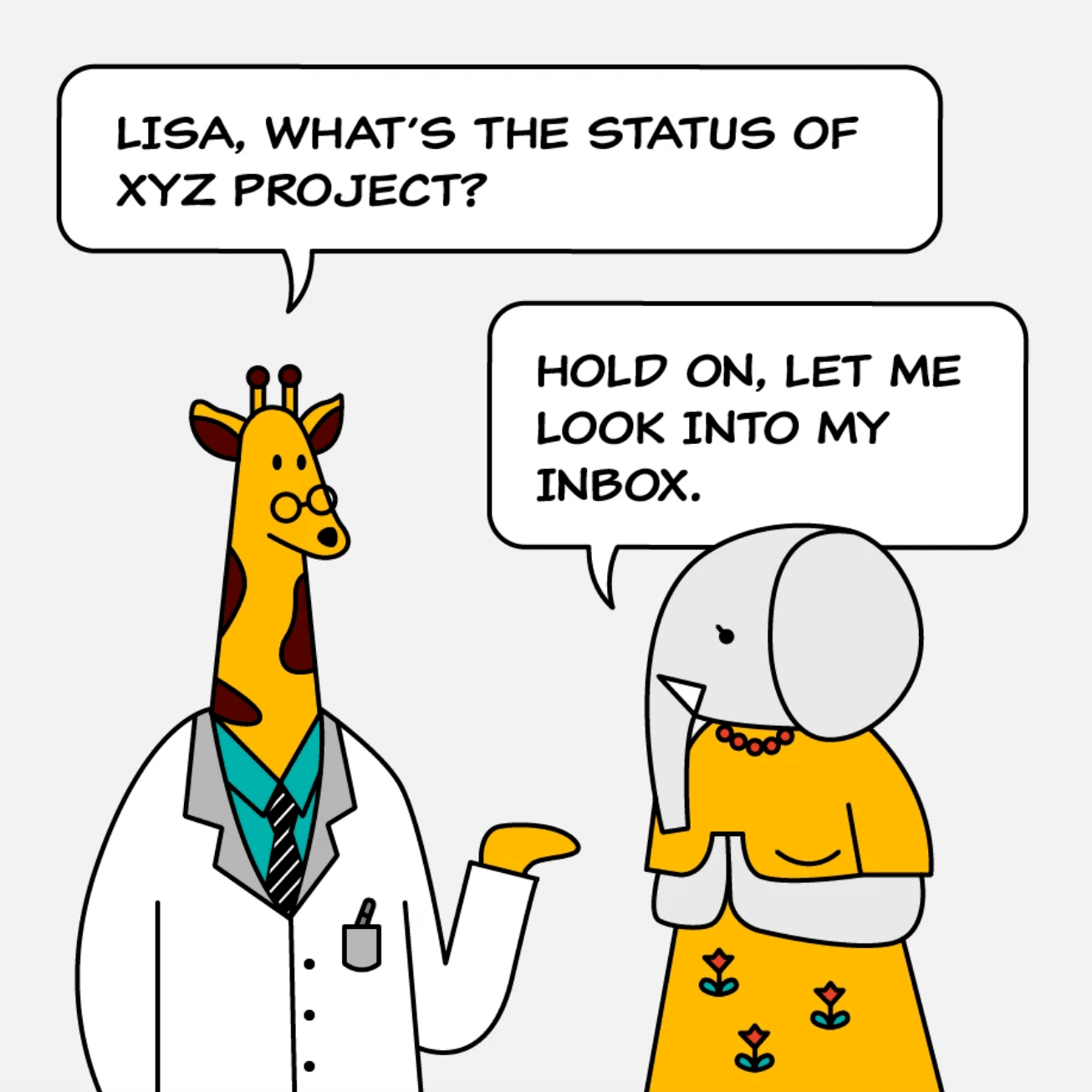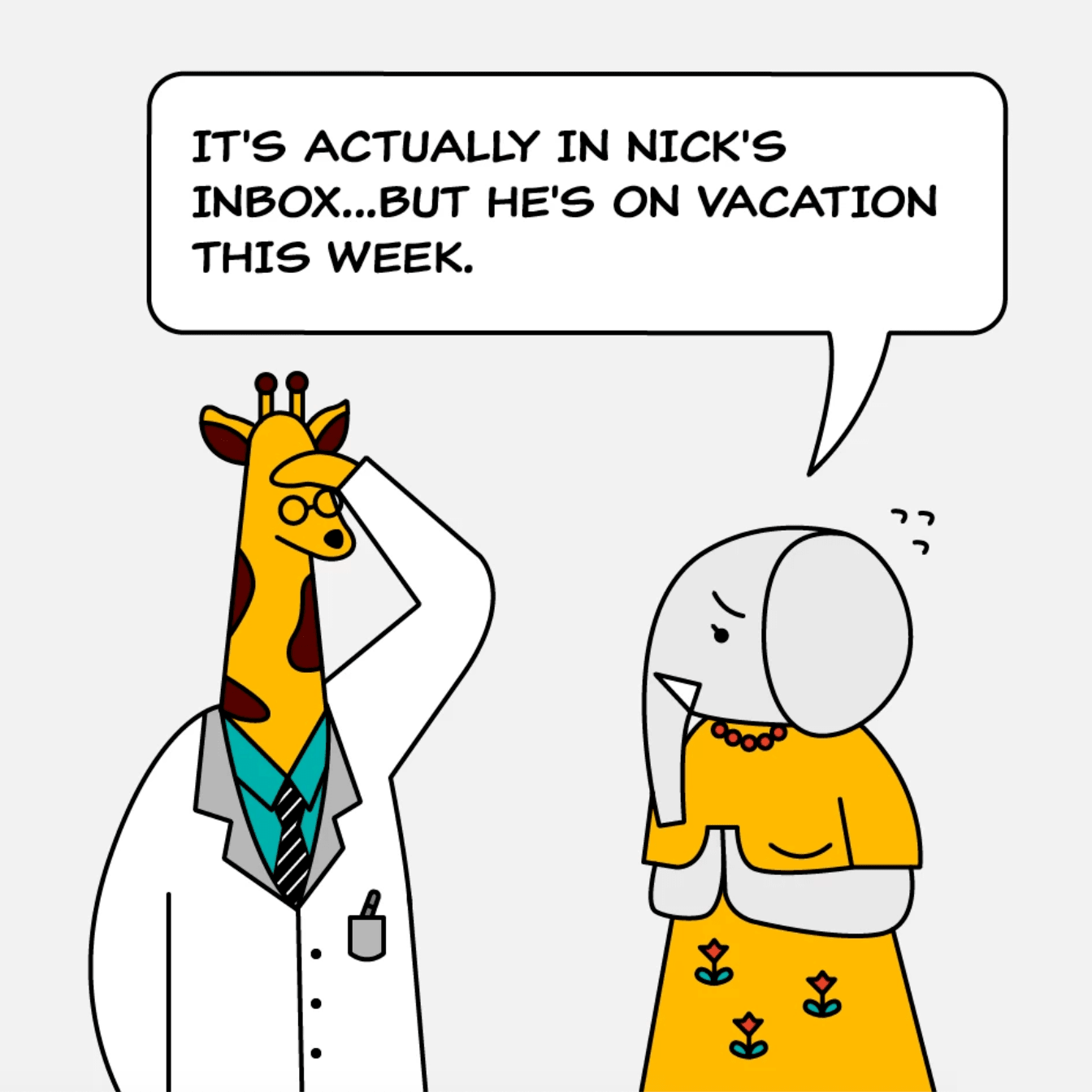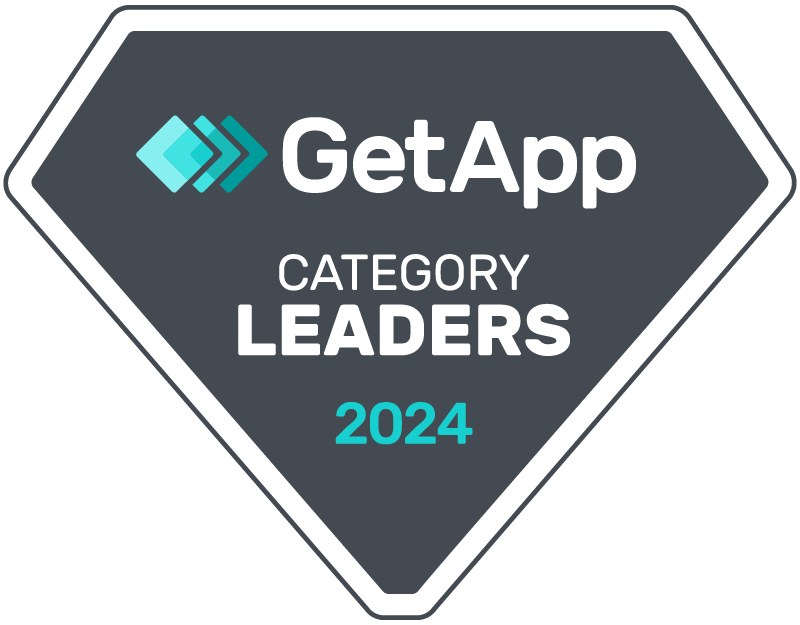When working remotely, we feel the limitations of our tools a bit more intensely. We can’t fill in the gaps on a project via sidebar conversations over a coffee run or a serendipitous run-in in the hallway. Things are just...different.
A prime example: my sarcastic quips don’t quite land the same way in a written message. Or a common quarantine meeting experience: that awkward moment when someone’s video chat lags, and everyone ends up talking over each other.
Things move along because they must, but our processes, tasks, and conversations don’t flow quite as easily. There are bumps, hurdles, and gaps in how things are done in this new, entirely remote setting.
Most of us will rely on this being a temporary situation and will turn to tools like Slack to help fill in the gaps. But many of these approaches are quick fixes, not long-term solutions that leave your company better prepared for a future of remote work.
Make no mistake—the quarantine is not forcing on us some way of life that will disappear with COVID-19. It’s simply thrusting us into the future of work at a faster rate than anticipated. The future is remote work, and it’s not a matter of if we get there but when.
When just came a little sooner for some of us.
In light of the future, it’s worth reconsidering how our workplaces are not only set up to adapt to the immediate future, but also the one on the horizon.
Related: [Webinar] How to Create a Sustainable Work-From-Home Policy
The tools we use shape the way we work
We’re finding out fast that many of the tools we rely on aren’t built for remote work—at least not if all of us are remote. The tools we use either hide conversations (private Slack DMs) or silo our data (shared docs via an email chain). Information we need relies on waiting for someone else to change and upload it back to a shared server.
When there’s an office setting, it’s easy to drop over to someone’s desk and ask them where the heck something is or when it’s going to arrive. With digital tools there’s no quick answer. You’re often left waiting, with no clear sense of how high a priority you are, if your coworker has even seen your request, or when they’ll get to it. And you can’t do the “over the shoulder” move to figure those details out.
The lack of transparency is not only looming, it’s absolutely maddening.
But that’s what many of our tools do: give us so many ways to connect that we ultimately end up even more disconnected from each other.
And when you build a company on tools that create and exacerbate disconnect, well, that’s how your culture goes. Whole departments not on the same page. Teams full of individuals who each have a part of the data puzzle but don’t know who else has the missing pieces they need to form a picture. Conversations work much like “if a tree falls in a forest”—if no one else was around to hear it, did it happen?
The problem(s) with email
Of all the tools we use, email is probably one of the biggest offenders when it comes to creating problems for teams.
Email, which has long been viewed by many companies as the primary channel for communication and collaboration, often doesn’t live up to its expectations when it becomes the sole source of information-sharing between remote members. People are left out of conversations, either by accident or on purpose, even when they might need information or gain value from knowing it. A conversation between sales team members might not seem relevant to marketing at the time, but it might have exactly the information marketing could use to create better campaigns—if only they’d been included in the email exchange.
Chains are long, poorly organized, and difficult to sift through when searching for old documents or requests. How many times did you have to scroll past your own email signature and the signature of seven others just to find the one sentence that mattered in a long thread of messages?
Learning how to become the best email attachment finder on your team isn’t a reason for success—it’s a sign that the tools your team relies on are dragging you down.
Many organizations have policies built around a largely email-based system, but email-based workflows are just super inefficient. Why? Because we’re spending so much time searching our inboxes (and other various places) for information and inadvertently creating data silos that are limiting info to a small group of recipients.


Click here to see more of our comic strips featuring KT, Lisa and the rest of the gang.
It’s not Lisa’s fault (or Nick’s). The tool is the problem. Email is just not built for streamlined collaboration. How many times have you forwarded a file to someone because they missed the original email or could only find an old version? Or one that I’m guilty of: sorting an important email away in a special folder and then not being able to find it later.
These communication and operational issues are amplified with a remote workforce.
Use tools that build trust & transparency
Transparency is one of the major tenets of our culture at Kintone, and it starts with our tools. All of those conversations that don’t need to be confidential? Make them open and accessible to everyone.
Accessibility helps solve two problems at once: first, the more accessible everything is, the less likely you’ll end up acting as a human information router, forwarding files and emails to different people over and over.
Second, accessibility to conversations that typically happen behind closed doors (or via private emails) helps build trust and a sense that we’re really all in this together. For example, our leadership team walks the talk by making executive meeting minutes public to our entire organization—any of our employees can view the topics that are concerning our execs and be aware of decisions and announcements that are coming our way.
How we do it at Kintone
So how do we make everything accessible and open? We use a centralized platform (i.e. Kintone) that functions as our single source of truth for all of our departments. It’s part web portal, part database, part communication platform—everything is neatly organized by topic, department, or project into corresponding apps, threads, and dashboards.
The result is that even our remote team members, who aren’t present for the water cooler chit chat, can see what everyone’s talking about, thinking about, and working on—everything is in one place.
For example, if I want to see what events are coming up for our events team, I can hop on over to their apps and conversation threads on Kintone and take a look. If someone on our sales team wants to see what content we have coming up on the blog, they can peek at our editorial calendar (also on Kintone) and even post some suggestions on our blog thread (again, on Kintone).
We tag the appropriate teammates to send a notification just as you would on your favorite social media platforms, and the rest of our teams can view the info if they’d like to.
A quick side note: we do recognize that some things need to be confidential, and Kintone’s platform has custom settings that enable you to set permission levels by individual, department, or specific group for each application and thread.
Here’s why the policies matter, too
I will admit it. My team uses Slack. We talk a big game on this blog about eliminating the silos that scatter our data across multiple channels and platforms, and yet we still use Slack. But here’s the caveat: we set rules for each communication channel.
Slack is for quick, instant communication only. Any deeper, work-related discussion happens on Kintone alongside the relevant data and documents. Recaps on Tiger King and other recent Netflix binges can happen on Slack.
These rules ensure that we know where our data is. If I’m looking for background information as well as discussions that happened about a project my teammate is working on, I know this is all on Kintone, and not hidden away in someone’s email inbox or past Slack messages.
Culture change isn’t easy
I want to emphasize that moving towards a culture of transparency is tough. It doesn’t happen overnight. Here’s an interview with Patty McCord, leadership author and former Chief Talent Officer at Netflix, that tackles some of the tough questions about this long-term cultural shift towards transparency and radical openness.
Maybe you can’t put a massive company culture change into effect right this minute, but one thing you can do is evaluate the tools you and your team are using. Do they make communication and teamwork easier or tougher? How are they impacting your team’s culture?
What's the next step?
If you’re looking for how to get your tools aligned with your goals, we recommend our webinar, "How to Build a Better Remote Work Experience with Less Software." This free, 30-minute crash-course webinar looks at:
- What to consider when re-evaluating your current software setup
- How to effectively evaluate the different kinds of platforms available to you
- How to build a software environment designed for remote work
About the Author
Euna is a Senior Content Specialist at Kintone. She holds a BA in English from the University of Michigan and has a thing for words, food, and travel.










